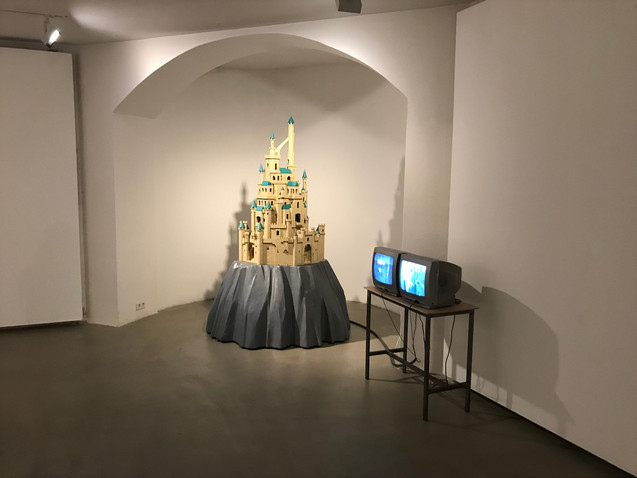
The spanish artists Carlos Aires, Pedro Calapez, Carmen Calvo, Iván Capote, Mateo Maté, Javier Pérez, Bernardi Roig participate in the collective exhibition Black Mirror
In many different cultures all over the world “Black Mirrors” have been luxurious, desirable objects. They were popular and profitable commodities and, from Mexico to India, an invaluable product for artists, magicians and scientists. Like the Greek term Téchne explains, “Black mirrors ought to allow insight into the connection of art, science and technique”.
Nowadays knowledge is digitized and can be reduced to binary codes – thus Téchne understood in this contemporary frame has reached a new topicality.
The Aztecs used black mirrors made from black volcanic lava for the practices of clairvoyance and healing. Through conquering the „New World“ Europeans also acquired knowledge of glass made from lava and used it for anatomic staging and occult activity. Since the age of the Renaissance European painters and architects – from Leonardo to Lorrain – used black or shaded mirrors to focus on a certain composition or perspective. Here, colorlessness served as new inspiration and relaxation for the eye in order to revitalize the artistic vision. The American physician Paschal B. Randolph made use of back mirrors believing in their mystical power – the artists Manet, Matisse, Sutherland, Gerhard Richter and many more relied on black mirrors as a portal of deeper reflection of the self, that was able to show more than the obvious. They are capable of capturing sensations: The ups and downs of melancholy and euphoria or the syncopation of creativity.
The “black mirror“ became an optical instrument, a tool for the artist to dim colors and sharpen perspectives. It does so not by creating a realistic illusion, but by alienating one´s own perception. The black shading is lack and exorbitance at the same time. It offers a different form of representation, one which is clearly a reflection of the self though not in a narcissistic way. To look into a black mirror means to discover and face a phantom of the self, a phantom of our own film noir.
The black mirrors of today hang on every wall, stand on every table and are held in every hand: They are the digital surfaces of our TVs, computers and smartphones.
We live in a time – where digital and the industrial modern age are clashing and where we have to acclimate to the ongoing acceleration of information sharing. Everywhere, screens surround us and are constantly trying to communicate and inform us. Time for peace and rest seems to be less important; it seems we have given up privacy for the unlimited exposure of ourselves.
In a society where technology has become an omnipresent drug, the package insert gets in focus. Medial impact seems to shape a new form of existence; the question of the „side effects“ must be considered and becomes more and more essential.
Artists: Carlos AIRES | Jean-Charles BLAIS | Pedro CALAPEZ | Carmen CALVO | Iván CAPOTE | Fabrizio CORNELI Plamen DEJANOFF | Fred EERDEKENS | Manfred ERJAUTZ | FERRO | Vadim FIŠHKIN | Kendell GEERS /Paolo GRASSINO | Fabian HERKENHOENER | Markus HOFER | Rebecca HORN | Michael KIENZER . Nicolas KOZAKIS | LAb[au] | Davide LA MONTAGNA | Jan LAUWERS | Mateo MATÉ | Philip MENTZINGEN Marzena NOWAK | Irina OJOVAN | Javier PÉREZ | Michelangelo PISTOLETTO | RaumZeitPiraten .Anselm REYLE | Bernardí ROIG | Anneliese SCHRENK | Michael SCHUSTER | Esther STOCKER | Barthélémy TOGUO Pedro TYLER | Markus WILFLING | José YAQUE | Vadim ZAKHAROV
Mario Mauroner Contemporary Art. Weihburggasse 26. Vienna, Vienna 1010
Image: Mateo Maté “Disneyworld”
